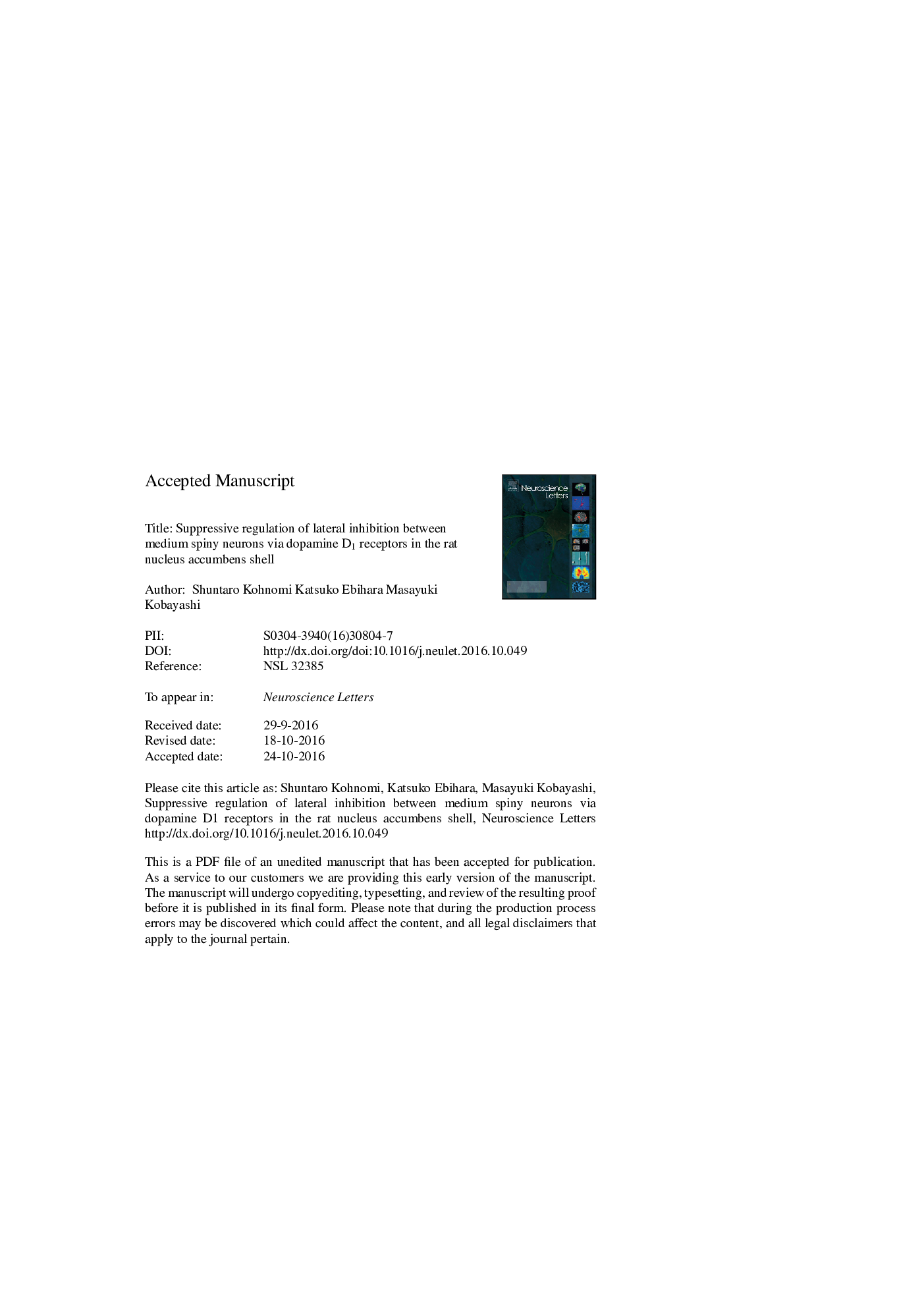| Article ID | Journal | Published Year | Pages | File Type |
|---|---|---|---|---|
| 5738718 | Neuroscience Letters | 2017 | 24 Pages |
Abstract
The nucleus accumbens (NAc) shell is closely associated with reward, psychiatric disorders (depression or schizophrenia), and drug abuse. Dopamine, released from the ventral tegmental area, is involved in these physiological functions and pathophysiological changes of NAc shell. Medium spiny neurons (MSNs), which are only GABAergic projection neurons in NAc, also innervate adjacent MSNs, forming the lateral inhibition network. Previous studies demonstrate that dopamine suppresses the lateral inhibition via D2-like (D2 and D3) receptors. However, the regulation to MSN-MSN synaptic transmission via D1 receptors remained unclear. In present study, aiming to reveal this issue, we examined the effects of the potent dopamine D1 receptor selective agonist SKF82958 on unitary IPSCs (uIPSCs) between two MSNs. SKF82958 (10 μM) decreased the amplitude of uIPSCs in about half of MSNs. The actions of SKF82958 was eliminated by pre-application of SCH23390 (1 μM), a dopamine D1 receptor selective antagonist. These results suggest that lateral inhibition between MSNs was suppressed via the activation of D1 receptors. Taken our previous findings, dopamine exclusively abolish the lateral inhibition in a stepwise pattern: (1) at low concentration of dopamine, only D3 receptors take part in the regulation of MSN-MSN synaptic transmissions, (2) dopamine concentration becomes higher, D2 receptors become involved in the suppression of lateral inhibition, and (3) at the maximal activity of the mesolimbic dopaminergic pathway, all dopamine receptor subtypes (i.e., D1, D2, and D3) are recruited for disinhibition of MSN activities.
Keywords
Related Topics
Life Sciences
Neuroscience
Neuroscience (General)
Authors
Shuntaro Kohnomi, Katsuko Ebihara, Masayuki Kobayashi,
